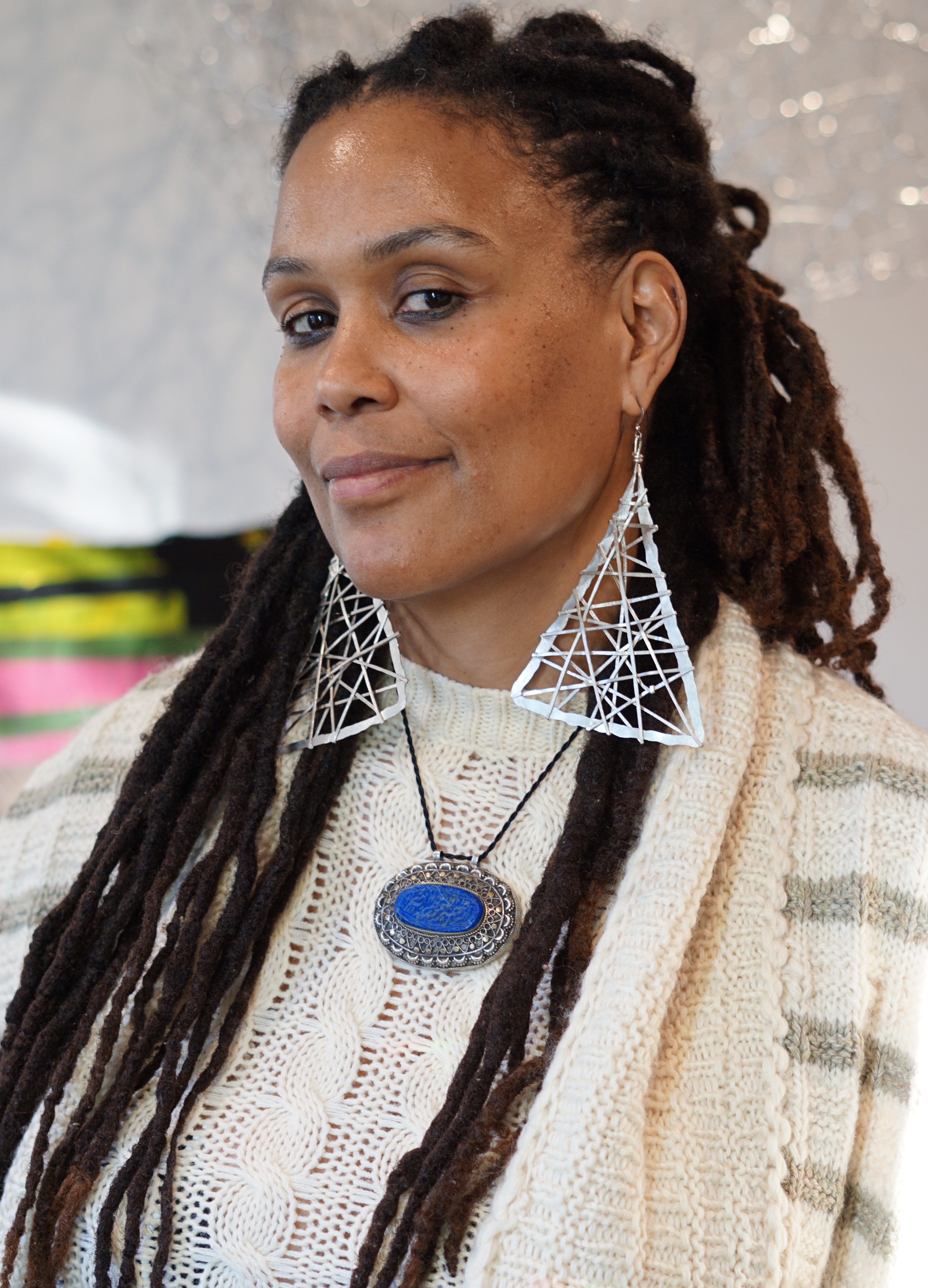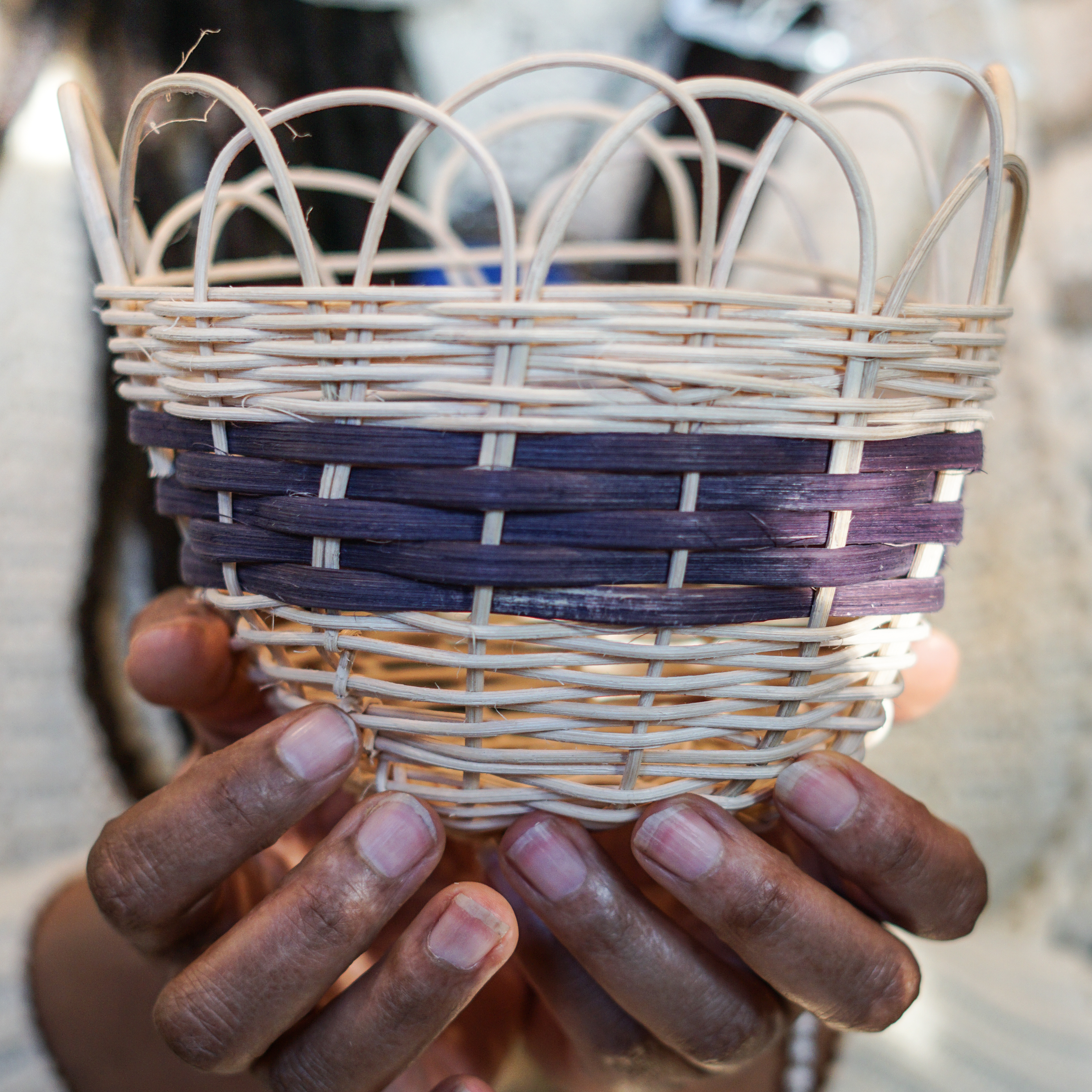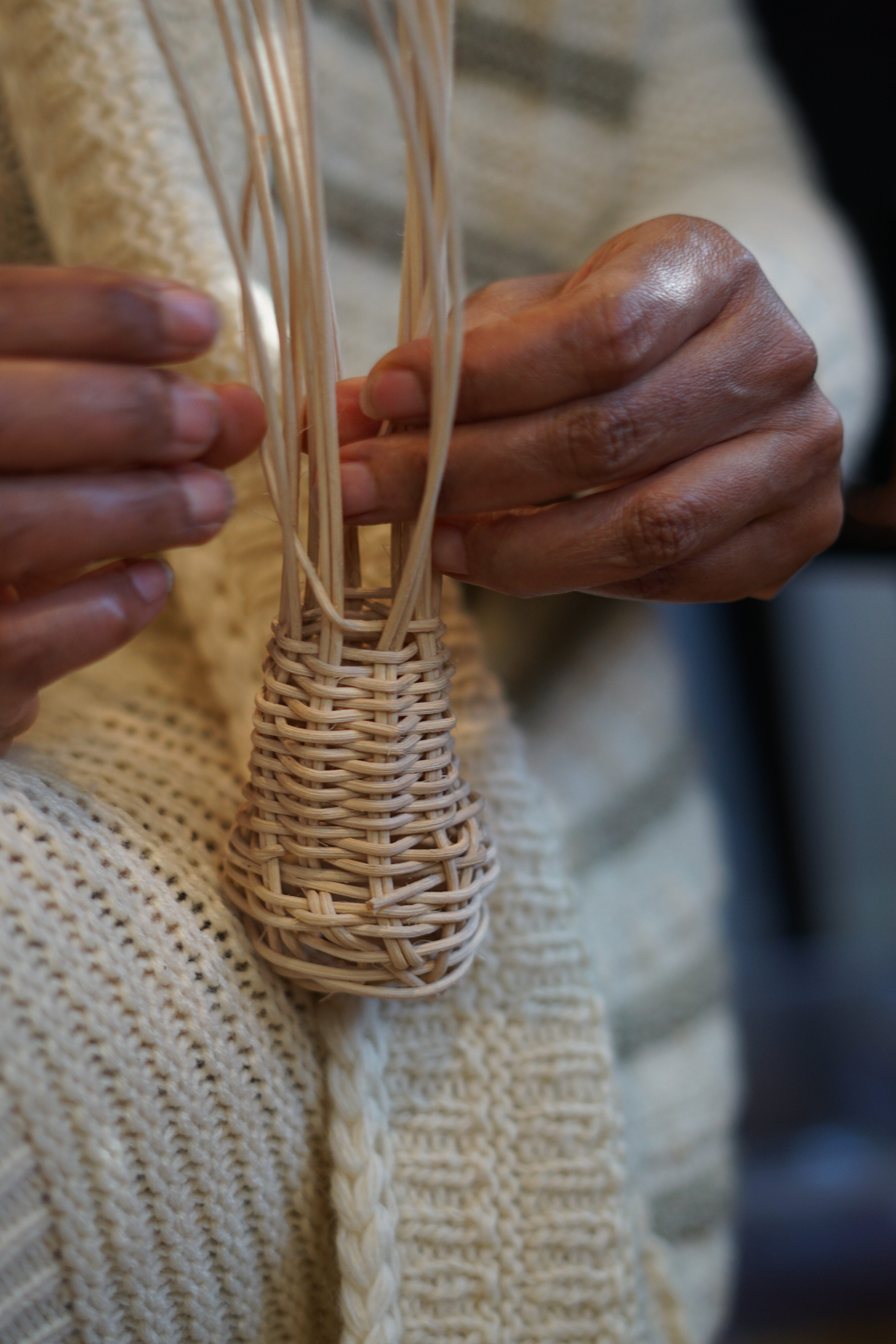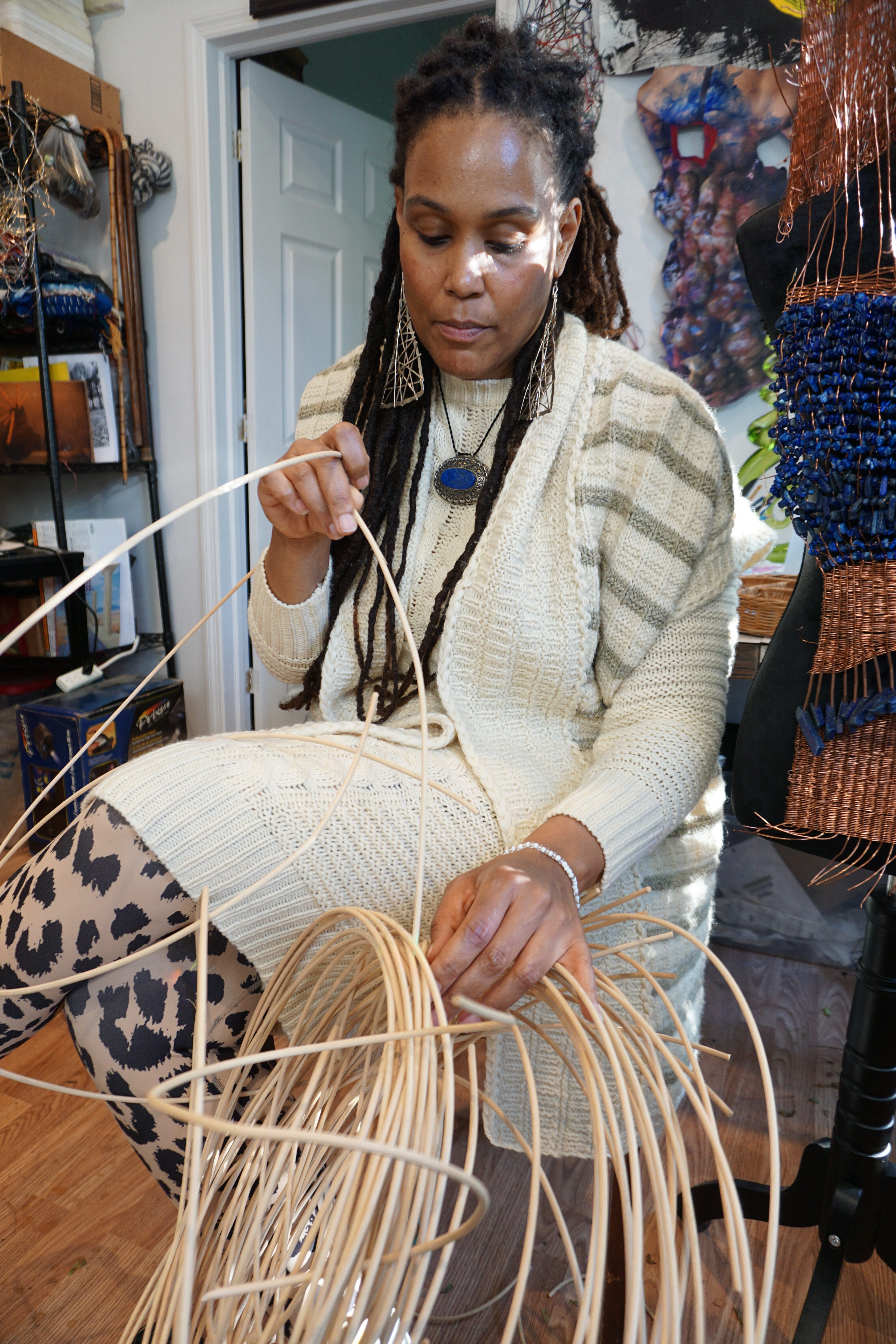Artist Profile: Jasmine Murrell
Feb 20th, 2024


Jasmine Murrell is a Brooklyn-based interdisciplinary visual artist born in Detroit, Michigan. She has exhibited nationally and internationally in venues such as the Museum of Contemporary Art, the Wexner Center for the Arts, the Bronx Museum, the Museum of Contemporary Art Chicago, the African-American Museum of Art, and the International Museum of Photography. Murrell has been a resident artist at the Bronx Museum AIM program, Baxter St. Gallery workspace, BRIClab contemporary art residency, Textile Arts Center, and Block Gallery workspace. Her work has been included in the book MFON: Women Photographers of the African Diaspora, The New York Times, Time Magazine, Hyperallergic, The Detroit Times, Ebony Magazine, The Washington Post, ArtNews, and several other publications.

Jasmine Murrell is a Brooklyn-based interdisciplinary visual artist born in Detroit, Michigan. She has exhibited nationally and internationally in venues such as the Museum of Contemporary Art, the Wexner Center for the Arts, the Bronx Museum, the Museum of Contemporary Art Chicago, the African-American Museum of Art, and the International Museum of Photography. Murrell has been a resident artist at the Bronx Museum AIM program, Baxter St. Gallery workspace, BRIClab contemporary art residency, Textile Arts Center, and Block Gallery workspace. Her work has been included in the book MFON: Women Photographers of the African Diaspora, The New York Times, Time Magazine, Hyperallergic, The Detroit Times, Ebony Magazine, The Washington Post, ArtNews, and several other publications.

Jasmine Murrell is a Brooklyn-based interdisciplinary visual artist born in Detroit, Michigan. She has exhibited nationally and internationally in venues such as the Museum of Contemporary Art, the Wexner Center for the Arts, the Bronx Museum, the Museum of Contemporary Art Chicago, the African-American Museum of Art, and the International Museum of Photography. Murrell has been a resident artist at the Bronx Museum AIM program, Baxter St. Gallery workspace, BRIClab contemporary art residency, Textile Arts Center, and Block Gallery workspace. Her work has been included in the book MFON: Women Photographers of the African Diaspora, The New York Times, Time Magazine, Hyperallergic, The Detroit Times, Ebony Magazine, The Washington Post, ArtNews, and several other publications.
Basket weaving is one of the oldest art forms known to humanity, and its history spans across various cultures and regions. The natural fibers used to make baskets are difficult to preserve, making it challenging to define exactly how old the craft is. Basket weaving is found on nearly every continent. Beyond its practical uses, the craft often holds cultural, symbolic, and artistic significance. The diversity in materials, techniques, and designs reflects a rich tapestry of human culture and creativity.
Throughout the world, basket weaving continues to be a dynamic and evolving art form, with weavers preserving traditional methods while also adapting to changing times and influences. It is also incredibly fun! Working with our hands to shape landscape into form connects us to place and to culture. Once a few techniques have been learned, creativity will soar and you’ll be well on your way to exciting new shapes and textures.
On Thursday, September 12th, Brooklyn-based interdisciplinary visual artist Jasmine Murrell will be teaching an in person basket weaving class at Tatter. Students will learn how to start and end two different wicker basket techniques and create a basket using recycled materials and fallen branches. We spoke with Murrell about her practice and inspirations: you can read her responses below.


When and why did you start basket weaving?
I actually started weaving in graduate school for art education at Wayne State University in Detroit, Michigan. I was super lucky to work with the master weaver Camille Ann Brewer, who is also a contemporary textile curator at Cranbrook Museum in Michigan. She is an incredible weaver and she actually introduced me to weaving baskets. I was drawn to basket weaving because it is just extremely magical and so rooted in the human experience because all of our ancestors at one time wove baskets.

From your perspective, how have traditional methods of basket weaving been preserved/transmitted and/or evolved across generations?
It’s a dying art form because of our addiction to non-living things. Once you start, though, it’s quite healing and no matter their age it always becomes my students’ favorite medium. When we weave, we are communicating with our ancestors, but we’re also communicating with trees and plants. It’s quite special and it’s also just super fun.
What is your favorite material to work with when weaving baskets and why?
My favorite materials are fallen branches or discarded trash. Material has meaning, and there can be new life from waste. It continues to be my mission to use all my own trash and give new life to something that seems useless.
How would you describe your teaching practice?
Each class is different because I’m in collaboration with not only the organization but the participants too. They each bring their own collective group of ancestors with them and the subconscious influence that has on their practice. It’s one of the most exciting experiences I get to have because I never know what new possibilities will emerge from the interactions. I provide a foundation that is essential for basic basket weaving, but I am also open to more advanced situations depending on the participants.

What do you hope is the main takeaway for attendees of the workshop?
It is my intention that everyone will leave with at least one basket that they couldn’t have imagined they could create and the eagerness and skillset to make another.

Jasmine Murrell is a Brooklyn-based interdisciplinary visual artist born in Detroit, Michigan. She has exhibited nationally and internationally in venues such as the Museum of Contemporary Art, the Wexner Center for the Arts, the Bronx Museum, the Museum of Contemporary Art Chicago, the African-American Museum of Art, and the International Museum of Photography. Murrell has been a resident artist at the Bronx Museum AIM program, Baxter St. Gallery workspace, BRIClab contemporary art residency, Textile Arts Center, and Block Gallery workspace. Her work has been included in the book MFON: Women Photographers of the African Diaspora, The New York Times, Time Magazine, Hyperallergic, The Detroit Times, Ebony Magazine, The Washington Post, ArtNews, and several other publications.
